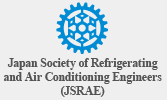Keynote Speakers
A1-Fr-3Friday, August 21, 13:30 - 14:10 (Room 411+412)
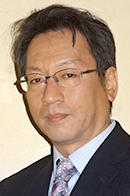
Yoichiro Ikeya
Sumitomo Heavy Industries, Ltd, Japan
![]() EXPANDING MARKET OF 4KGM CRYOCOOLER
EXPANDING MARKET OF 4KGM CRYOCOOLER
There are several types of cryocoolers that generate cooling power at cryogenic temperatures. The Gifford-McMahon (GM) cryocooler is the most widely used cryocooler in industrial applications such as cryopumps for semiconductor manufacturing, MRI (Magnetic Resonance Imaging), etc., due to high reliability and ease of operation and handling.
GM cryocoolers are closed-cycle regenerative refrigerators originally invented by Gifford and McMahon in 1959. The lowest temperature of commercial GM cryocoolers had been around 10K, primarily due to the very low specific heat capacity of conventionally-used regenerator material (Pb) below 10K. 10K cryocoolers functioned to reduce liquid helium boil-off in superconducting applications, particularly MRI.
As MRI and other superconducting applications continued to develop commercially, liquid helium became scarcer and more expensive. This drove the need for cryocoolers to reliably achieve 4K temperatures to further reduce, and even eliminate, helium losses. Research and development activities began in the late 1980s and early 1990s, specifically focused on new regenerator materials and gas sealing technologies to address this need. The world's first 4KGM cryocooler was commercialized in 1996, which became an enabling technology for "zero boil-off" superconducting applications.
A2-Fr-2Friday, August 21, 10:30 - 11:10 (Room 418)
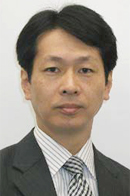
Motohiko Nishimura
Kawasaki Heavy Industries, Ltd., Japan
![]() DEVELOPMENT FOR ENERGY CARRIER WITH LIQUID HYDROGEN FROM OVERSEAS
DEVELOPMENT FOR ENERGY CARRIER WITH LIQUID HYDROGEN FROM OVERSEAS
In Japan, both CO2(Carbon dioxide) emission reduction and energy security are the very important social issues after Fukushima Daiichi accident. On the other hand, FCV (Fuel Cell Vehicle) using hydrogen have been on the market at the end of 2014. Introducing large mass hydrogen energy is being expected as expanding hydrogen applications, or solution to energy issues of Japan. And then, the Japanese government announced the road map for introducing hydrogen energy supply chain in June, 2014. Under these circumstances, imported CO2 free hydrogen will be one of the solutions for energy security and CO2 reduction, if the hydrogen price is affordable. To achieve this, Kawasaki Heavy Industries, Ltd. (KHI) performed a feasibility study on CO2-free hydrogen energy supply chain from Australian brown coal linked with CCS (Carbon dioxide Capture and Storage) to Japan. In the study, hydrogen production systems utilizing brown coal gasification and LH2 (liquid hydrogen) systems as storing and transporting hydrogen are examined. This paper shows the possibility of realizing the CO2 free hydrogen supply chain, the cost breakdown of imported hydrogen, comparison of power generation cost, and LH2 systems as key technologies of the hydrogen energy chain.
B1-We-1aWednesday, August 19, 8:30 - 9:10 (Room 301)
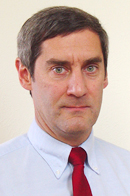
Mark O. McLinden
Applied Chemical and Materials Division, National Institute of Standards and Technology, United States
![]() HITTING THE BOUNDS OF CHEMISTRY: LIMITS AND TRADEOFFS FOR LOW-GWP REFRIGERANTS
HITTING THE BOUNDS OF CHEMISTRY: LIMITS AND TRADEOFFS FOR LOW-GWP REFRIGERANTS
We explore the possibilities for low-GWP refrigerants through two approaches. First, we explore the performance of hypothetical refrigerants to define the limits of what is allowed by thermodynamics. In the second approach, we apply property estimation methods and screening parameters to identify best candidates from a database of 100 million chemicals. We find that the optimal thermodynamic characteristics are quite rare; additional fluids are eliminated because they are unstable or highly toxic. We then estimate the cycle performance (considering the basic cycle, economizer cycle, and a cycle with a liquid-line/suction-line heat exchanger) of the remaining candidates and apply efficiency as an additional screening criterion. The end result is not thousands of low-GWP candidates, but a handful, and even these present tradeoffs. We argue that these represent all the viable candidates for single-component, medium- and highpressure refrigerants—in other words, we have hit the limits of what chemistry allows.
B2-Tu-3bTuesday, August 18, 13:30 - 14:10 (Room 414+415)

Yong Tae Kang
Korea University, South Korea
![]() CO2 ABSORPTION/DESORPTION PERFORMANCE ENHANCEMENT BY NANOABSORBENTS
CO2 ABSORPTION/DESORPTION PERFORMANCE ENHANCEMENT BY NANOABSORBENTS
Experiments on CO2 absorption were carried out in Taylor-Couette type absorber at low rotational speeds. The base absorbent used is methanol. Al2O3 and SiO2 nanoparticles are combined with methanol to produce nanoabsorbents with the purpose of enhancing the absorption of the CO2 gas. The system is equipped with a mass flow controller at the inlet and a mass flow meter at the outlet to obtain the absorption rate. The Taylor- Couette absorber performance is compared to a modified version in which trays were added to enhance the absorption rate by increasing the residence time of the gas phase. Experiments in co-current and counter-current flow modes are carried out. It is found that the CO2 absorption rate enhances up to 6% and 8%, respectively, by using SiO2 and Al2O3 nanoparticles. In addition, the two-phase flow pattern of the CO2 gas bubbles and the liquid methanol in the Taylor-Couette absorber and the modified version is analyzed with the high-speed camera pictures.
C2-Tu-3Tuesday, August 18, 13:30 - 14:10 (Room 418)
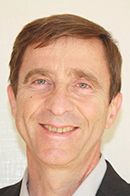
Jacques Guilpart
IIR President of Section C, France
![]() FOOD TECHNOLOGY AND FOOD PRESERVATION : AN OLD NECESSITY WITH A PROMISING FUTURE
FOOD TECHNOLOGY AND FOOD PRESERVATION : AN OLD NECESSITY WITH A PROMISING FUTURE
Refrigeration preserves our food, preventing its rapid and uncontrolled evolution. Thus it enables the increase in food supply for ever growing populations living in cities becoming larger and larger. According to this reality and to the obvious that refrigeration allows a significant reduction of food losses, it is commonly accepted that the development of refrigeration is indispensable to the sustainable development of our today's and tomorrow's world.
But refrigeration is not only food preservation: it is also widely used in food process and food production.
Since the beginning of the development of artificial refrigeration, the used technologies are based on fundamental principles which remain inescapable. On one hand, the predominance of cold production based on compression – expansion cycles with phase change of a refrigerant. And on the other hand, the use of gaseous or liquid cooled media to ensure cooling of food products. These technologies sometime use some environmentally unfriendly refrigerants. They are energy consuming. And their performances are limited on one hand by the limits of the thermodynamics and on the other hand by the limits of heat and mass transfer rate between the cooling media and the food product.
After a short overview of this problematic, this paper gives some information on possible alternatives to refrigeration and on technological novelties in refrigeration processes in food industry. It also indicates the major trends and progresses in the modelling of refrigeration processes.
D1-Fr-1Friday, August 21, 8:30 - 9:10 (Room 416+417)
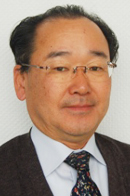
Kuniaki Kawamura
Mayekawa Mfg., Co., Ltd, Japan
![]() EXPERIENCES IN RENEWAL OF COLD STORAGE FACILITIES FROM R22 TO NH3/CO2 IN JAPAN
EXPERIENCES IN RENEWAL OF COLD STORAGE FACILITIES FROM R22 TO NH3/CO2 IN JAPAN
In Japan, many cold storage warehouses were built using refrigerants HCFC22 or HFC23 in cascades up to early 2000. Production of HCFC22 will stop from 2020 and HFC23 is also expected to be banned because of its high GWP.
NH3/CO2 refrigeration equipments were developed and installed as replacements for HCFC22 systems because of their lower energy consumption and are friendly to the environment. Air refrigeration equipments have also been introduced in extremely low temperature ranges such as -60C tuna warehouses as replacements for HFC23 cascades. Air refrigeration system offer low power consumption compared to the conventional HFC systems.
This paper introduces concepts of NH3/CO2 secondary refrigerant system and air refrigeration equipments and gives actual energy comparisons with HCFC22 and HFC23systems.
D2-Fr-3Friday, August 21, 13:30 - 14:10 (Room 418)

Gérald Cavalier
Cemafroid, France
![]() PHARMACEUTICALS COLD CHAIN CHALLENGES
PHARMACEUTICALS COLD CHAIN CHALLENGES
Most of pharmaceuticals and health products are sensible to temperature. Their properties can be changed, their efficiency reduced and they can even be destroyed or turned dangerous by exposure to unappropriated temperatures.
Cold chain and controlled temperatures play thus a growing role in pharmaceuticals and health products distribution. With the internationalization of the market, pharmaceuticals logistic become also more and more complex. The products can be exposed to extreme conditions. In the same time, the number and variety of thermossensible pharmaceuticals fast increase and the diversity of molecules is larger due to biotechnologies development for example.
Taking into account these evolutions, health regulations have been recently reinforced in many countries to improve the performance of pharma logistics, the safety of the products and their efficiency and to reduce the cost of a tremendous market.
With new requirements in a growing market, pharma logistics under controlled temperatures is then facing new challenges.
This conference will present the context of pharmaceuticals cold chain, the recent and present changes and will detail the new challenges to be faced to achieve the new goals.
E1-Tu-3Tuesday, August 18, 13:30 - 14:10 (Room 411+412)

Pega Hrnjak
University of Illinois (ACRC) and CTS, United States
![]() NEW DEVELOPMENTS IN MICROCHANNEL HEAT EXCHANGERS
NEW DEVELOPMENTS IN MICROCHANNEL HEAT EXCHANGERS
Over last twenty years microchannel heat exchangers have dramatically increased their presence in energy conversion systems: from aircrafts through automotive applications where they are almost exclusively used today, these components are expanding to stationary (residential) and recently to industrial refrigeration.
Applications as condensers are dominant, mostly because absence of fouling due to condensate retention or frosting and significantly lesser impact of distribution issues on system performance. Improving these three mentioned difficulties is the key element for final overwhelming market acceptance of microchannel heat exchanges as evaporators.
The paper presents these major issues: 1) condensate retention/removal, 2) frosting/ defrosting and 3) refrigerant distribution. Special attention is given to shedding light on physics of the issues and the direction for mitigating them.
Particular attention is given to refrigerant distribution and Flash Gas Bypass as a possibility to improve it. Experimental examples of FGB are presented for few cases and system improvements are quantified. In addition, flow reversal in microchannel tubes is be presented with videos and explanations. Quantification of the flow reversal is presented along with system capacity and efficiency improvement when reversed vapor flow is removed.
E1-We-1Wednesday, August 19, 8:30 - 9:10 (Room 411+412)

Chien-Yuh Yang
National Central University, Taiwan
![]() FLOW DISTRIBUTION OF TWO-PHASE REFRIGERANT IN PLATE HEAT EXCHANGER
FLOW DISTRIBUTION OF TWO-PHASE REFRIGERANT IN PLATE HEAT EXCHANGER
The present study provides experimental observations of air-water and two-phase refrigerant in plate heat exchangers with inlet distributors. A transparent Pyrex plate heat exchanger was used for air-water flow visualization and the Infrared Thermography was used for measuring the surface temperature of a plate heat exchanger with twophase refrigerant heat transfer inside. The heat transfer performance experiment results and numerical analysis results for air-water flow by Yang et al. (2012) were included for comparison. The air-water mixture flow visualization results show that the effect of Reynolds number on the flow distribution is not high. Flow in the plate with the distributor in the direction 6 provided the most uniform distribution at both high and low Reynolds number conditions. The Infrared thermal images show that the temperature distribution at the cross section of midways along the bulk flow of refrigerant for the plate with distributor in direction 12 are the least in comparing to plates with distributor in other directions. The results of overall heat transfer coefficient test also show that the most uniform refrigerant flow resulted in the highest overall heat transfer performance.
E2-We-3Wednesday, August 19, 13:30 - 14:10 (Room 416+417)

Per Lundqvist
KTH, Department Energy Technology, Division Applied
Thermodynamics and Refrigeration, Sweden
![]() THE ROLE OF HEAT PUMPS IN SMART ENERGY SYSTEMS
THE ROLE OF HEAT PUMPS IN SMART ENERGY SYSTEMS
Heat pumps are needed in the future energy system to save primary energy, increase the share of renewable energy and thus to reduce climate impact. This is manifested in most recent future scenarios for low carbon energy systems that acknowledge the importance of efficient and reliable heat pump system. The role of heat pumps will change and broaden as the energy system becomes smarter. Information and smart controls in heat pumps coupled to storage possibilities will stabilize the electric energy system when the amount of flowing energy sources such as wind and solar energy increases. A stronger focus on resource efficiency and reduction of primary energy will put pressure on required seasonal performance factors for heat pump system. Increased system efficiency and high energy coverage are thus important challenges for heat pump system design. Hybrid systems where heat pumps are coupled to solar thermal energy and solar PV systems are likely to emerge on the market.
E2-Th-1Thursday, August 20, 8:30 - 9:10 (Room 416+417)

Yi Jiang
Building Energy Research Center, Tsinghua University, China
![]() ABSORPTION HEAT PUMPS AS THERMAL TRANSFORMER FOR LONG DISTANCE HEAT TRANSPORTATION
ABSORPTION HEAT PUMPS AS THERMAL TRANSFORMER FOR LONG DISTANCE HEAT TRANSPORTATION
A novel system for long distance heat transportation using two types of absorption heat exchangers (AHEs) is prompted in this paper. Using the system, the industry waste heat at 65~70℃ can be recovered and transported through a long distance pipeline. The transported temperature difference can be increased two times more than normal system based on conventional heat heat exchangers for heat transfer. Considering the reduction of the pipe network cost balance with the added AHEs cost, an economic balance distance is obtained, and when the distance is longer than the economic balance distance, the AHEs system can save the initial cost. The economic balance distance is in direct proportion to the transportation pipe diameter. Take the pipe with diameter 1020mm for example, the economic balance distance is about 28km. While when considering the transportation electricity consumption reduction of the novel system, the economic balance distance can be shortened. The 1st type AHEs has been developed for several years. The small sized AHE is introduced intensively, including the structure, the testing performance and the application projects, which constructs the building type heat supply system with a very wide application prospect.
S1-We-1Wednesday, August 19, 8:30 - 9:10 (Room 313+314)

Shin-ichi Tanabe
Waseda University, Japan
![]() THERMAL COMFORT AND PRODUCTIVITY FOR THE FUTURE HVAC
THERMAL COMFORT AND PRODUCTIVITY FOR THE FUTURE HVAC
Office environment is important for office workers because it effects their satisfaction and also productivity. Recently, workers' satisfaction is a focus of attention for office environment easy assessment. On the other hand, the International Energy Agency published latest World Energy Outlook 2013. The global demand for energy will keep rising. Jumping by one-third by 2035. Especially Asia region. Non-OECD Asian countries have more impact on economy and energy until 2035. Low-carbon energy sources will be able to meet around 40 percent of that growth. In Japan the Great East Japan Earthquake on March 11, 2011 caused enormous damage to infrastructure and lead to a 15% peakpower reduction in and around Tokyo. The purpose of HVAC is to maintain high indoor environmental quality (IEQ) and workers' productivity. We conducted continuous field and questionnaire surveys in power-saving office buildings in the summers of 2011–2013. The results indicate that the thermal environment and indoor air quality recovered to pre-quake levels after 2012; whereas, considering the lighting environment, desk level illuminance was greatly decreased from 750 lux (pre-quake) to around 500 lux (post-quake). Nearly all of the workers are satisfied with IEQ today, but this differed with the workers' gender, age, awareness of saving electricity, and work satisfaction. In particular, differences in workers' awareness had a profound effect on their satisfaction with IEQ. This indicates that workers who were supportive of saving electricity experienced and reported greater satisfaction with IEQ. This conclusion will provide clue to the way of the operation and environmental control in the offices in Japan, also in the many countries which unexperienced such the great earthquake. Based on reported data future HVAC is described.
S1-We-2Wednesday, August 19, 10:30 - 11:10 (Room 313+314)
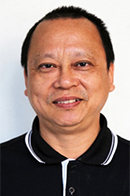
Hsien-Te Lin
Department of Architecture, National Cheng-Kung University, Taiwan
![]() THE FIRST ZERO-CARBON ARCHITECTURE IN TAIWAN
THE FIRST ZERO-CARBON ARCHITECTURE IN TAIWAN
THE MAGIC SCHOOL OF GREEN TECHNOLOGY, NCKU
This paper introduces the design concepts behind the MSGT (Magic School of Green Technology), which is located in the National Cheng Kung University and is the first zero-carbon architecture in Taiwan. Opened on 12 Feb. of 2011, it is a project with the highest energy conservation standards in the world and had been certified as a diamond grade green building by Taiwan's EEWH system and a platinum grade green building by LEED. The project favors "appropriate technology", "local technology" and "factorfour efficiency" over expensive high technology. Four professors and twelve graduate students conducted numerous experiments and design benefit analyses to eventually achieve a remarkable 65% energy conservation. Specifically, the project applied the most inexpensive and natural devices, such as ceiling fans and a kiln ventilation system, to reduce AC energy consumption for the offices and the international conference hall by 76% and 27%, respectively. Through actual readings from Building Energy Management System (BEMS) during January to December, 2011, accumulated EUI of 40.43 kWh/ (m2.yr) against eQUEST analytical assessment of 43.0 kWh/(m2.yr) for the same period. Actual energy consumption analysis for air conditioning, lighting, socket outlet, and power equipment, respectively recorded 43.5%, 10.4%, 21.9%, and 24.2% in July. Demonstrating that eQUEST analytical assessed value is very consistent with building's actual energy consumption readings. The MSGT provides solid proof that the greenest building is achievable through smarter design and better economy.
>>TOP


